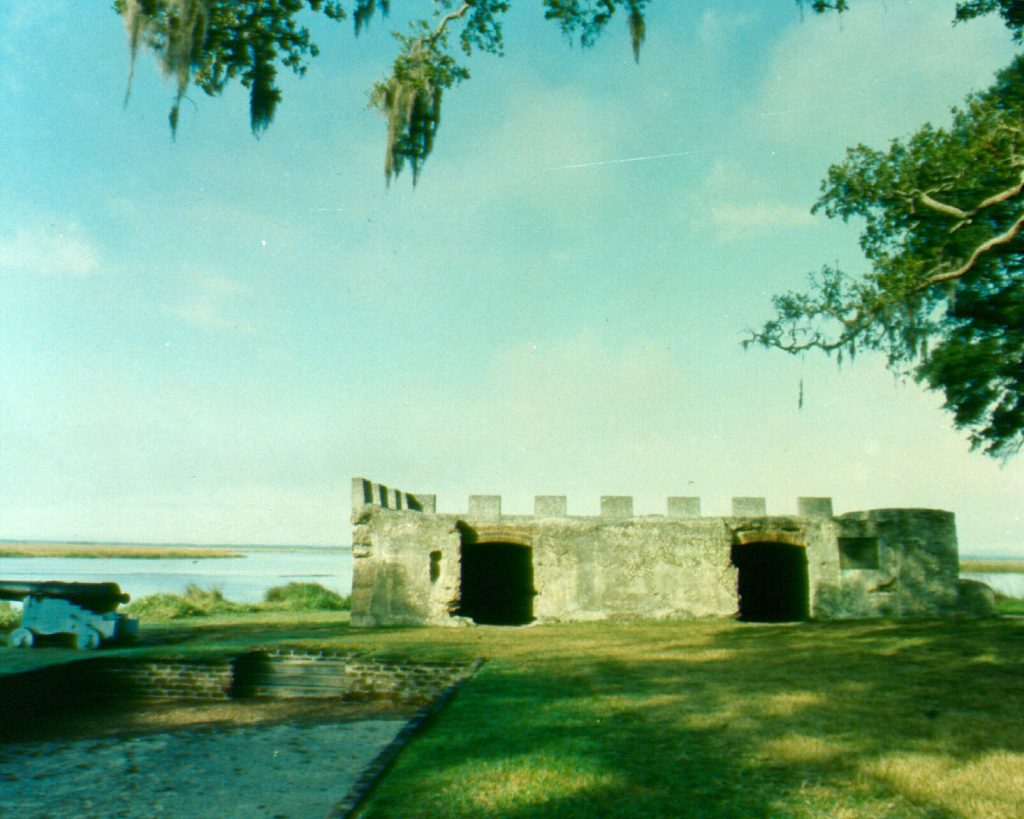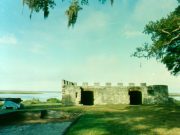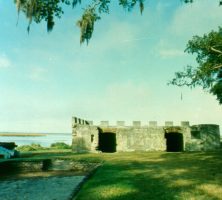As an educational tool archaeology has few equals. It brings together such skills as data gathering, logic, mapping and orienteering, statistics, and storytelling. Because the Office of the State Archaeologist (SA) has limited resources for archaeological education, the Historic Preservation Division has found that partnering with other Department of Natural Resources (DNR) divisions and agencies is an effective way to bring archaeology to the public.
One of the most effective partnerships DNR supports is with the National Park Service at Fort Frederica National Monument. Every summer, teachers from the local school system receive training at the monument in archaeological techniques. They take those skills back to the classroom, then return with their students to the monument to excavate in a simulated colonial site. DNR provides staff support and expertise for this award-winning effort.

Courtesy of Sea Island Company
DNR has its own archaeological resources as well. The SA is a partner in Nature’s Adventure at Ossabaw Island, offered by the Coastal Empire Council of the Boy Scouts of America under a cooperative agreement with DNR and the Ossabaw Island Foundation. During the nine-day campout, DNR naturalists, scientists, and historians provide information and conduct land and water ecological tours.
Teams of scouts help DNR archaeologists lay out grid lines using compass and tape, map in points using Global Positioning System technology, dig shovel tests, and excavate small test units on plantation-era archaeological sites. Groups alternate between shovel testing and excavating test units, so that each participant is able to see the whole field process. Students thus gain a better understanding of how people have related to the coastal environment over time and of the role archaeology plays in telling their stories.
The SA also assists with various education forums across the state. The Georgia Science and Engineering Fair gives students an opportunity to learn about a specific aspect of archaeology within a broader scientific context. Coast Fest, sponsored each year by DNR’s Coastal Resources Division, offers archaeologists a chance to link the ancient past with modern ecological education. DNR’s Weekend for Wildlife, held each February, provides small groups of environmentally minded citizens a chance to learn about the archaeology of Sapelo Island and the role modern remote-sensing technology plays in telling the story of the earliest Indian inhabitants.
Educating Georgia’s citizens to be better stewards of its archaeological heritage is critical to the long-term success of preservation. By partnering with organizations outside “traditional” historic preservation, the SA reaches new audiences that link archaeological stewardship to environmental concerns.






